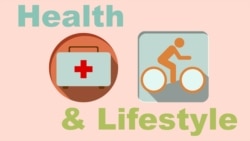A special device worn on the head that sends electrical charges into the brain may improve the memory abilities of older people. The device may even give them the ability to remember things as well as a person 20 to 30 years younger than them.
These are the findings of a study released in the scientific publication Nature Neuroscience earlier this month.
Researchers working on the study found that the age-related damage to working memory can be repaired. This is possible, they found, through stimulating two important areas of the brain at a special rhythm.
Working memory is the information held temporarily for use in immediate activities such as reasoning and decision-making.
The study involved 42 younger adults aged 20 to 29 and 42 older adults aged 60 to 76. The researchers tested all subjects for their performance in a working-memory activity.
The findings are still early and only relate to healthy volunteers. But the findings could point to new ways to increase brain operation in older people suffering from diseases that affect these operations, such as dementia and Alzheimer’s patients.
Electroencephalography, or EEG, is a method of observing brain activity. Transcranial alternating-current stimulation, or tACS, is the means of sending electrical charges into the brain. Using both EEG and tACS, the scientists stimulated the brains of the group of young and old people. They were able to make small changes to the brainwave connections linked to their working memory.
Without brain stimulation, the older people were slower and less correct in their memories than the younger ones.
This was because the younger people had higher levels of connections of certain brain wave rhythms, the researchers said. This suggests that centering the treatment on these types of rhythms in the older people’s brains might help their operations.
Robert Reinhart is a researcher at Boston University. He co-led the study. He said that when older adults received active brain stimulation, they improved their working-memory test scores to the levels of the younger people. The effect lasted for at least 50 minutes after the stimulation was given.
Reinhart said that the findings open up new possibilities for research. But he had no immediate suggestions for the findings’ use in medicine.
“Much more basic science has to be done first,” he added.
Neuroscientists agreed that the findings raised interesting questions about how working memory operates, and how it worsens with age. But they also agree that more research is needed before the treatment can be developed for wider use.
I’m Pete Musto.
Kate Kelland reported this story for the Reuters news service. Pete Musto adapted it for VOA Learning English. Ashley Thompson was the editor. We want to hear from you. What other uses do you think researchers will find for this new device? Write to us in the Comments Section or on our Facebook page.
______________________________________________________________
Words in This Story
stimulating – v. making something more active
rhythm – n. a regular, repeated pattern of sounds or movements
certain – adj. used to refer to something or someone that is not named specifically
basic – adj. forming or relating to the most important part of something
neuroscientist(s) – n. an expert in the scientific study of nerves and especially of how nerves affect learning and behavior








